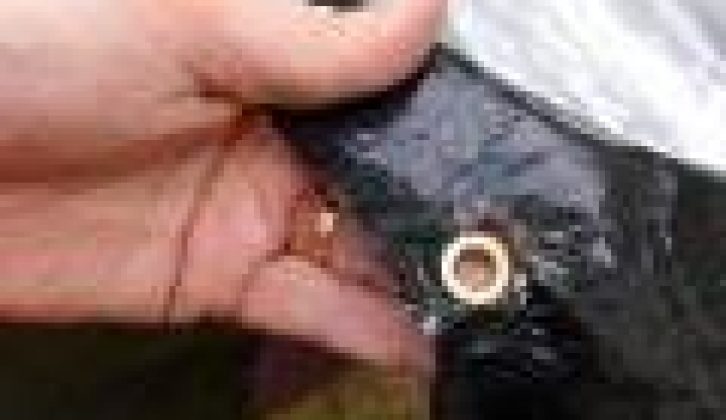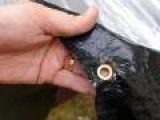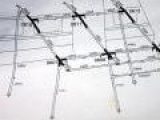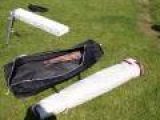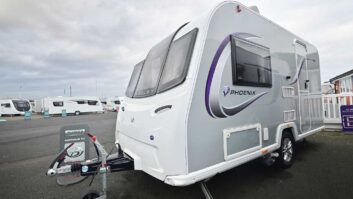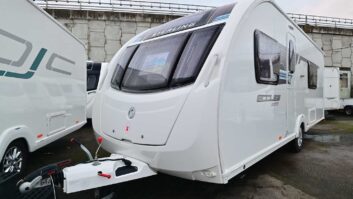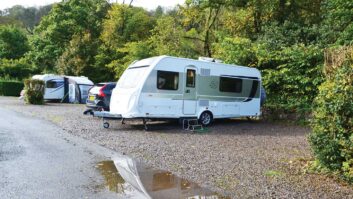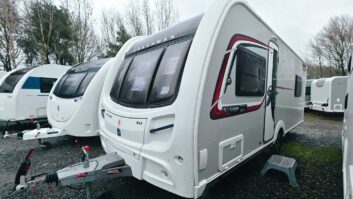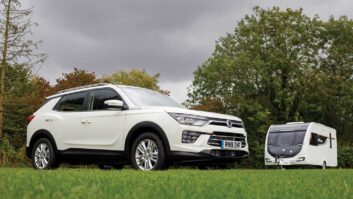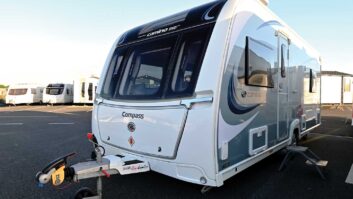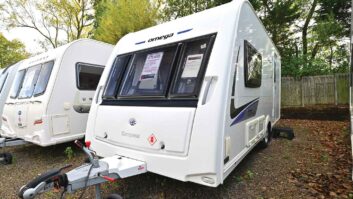Without doubt, buying a used awning is a risky purchase. The deal is fraught with possible problems, especially if you buy privately from a source you don’t know.
Dealers will often sell used awnings too, but it is still good advice for buyers to beware. Whichever type of awning you are looking at, the advice is essentially the same.
1. Compare prices
The first question you need to ask yourself is: For the money I’m prepared to pay, could I get a new awning instead? This may appear a bit of a silly question but in the last few years a number of new companies have appeared on the scene selling their own brand of awnings manufactured in the Far East at prices which are much less than many of the better known brands, but which do offer good value for money.
2. Check the size
Having made the initial decision to buy second-hand your next move should be to check the ground to ground dimension of the caravan. Do not rely on the information in the caravan handbook – it isn’t always correct. Instead, site the ‘van on level ground and then run string through the awning channel from the ground at one end to the ground at the other end and measure it. In the case of a porch awning, check the height of the awning rail from the ground. This is likely to be between 230 and 250cm.
3. Will it fit?
Additionally, in the case of a porch awning check the distance from the door to any nearby window, fridge vent or other item which the awning could obstruct or cut across. It could be that instead of a porch, you might have to opt for a ‘weekend’ type awning; that is, one which is larger than a porch but smaller than a full awning, but in which the side panels do not fit into the awning channel but run straight down the side of the ‘van.
4. On site research
Once you have the basic details as to the size of awning, assuming that you have no preconceived ideas of what awning you want, you would be well advised to talk to the owners of awnings that you see on sites which interest you. Within five minutes you’ll know all their plus – and more importantly – and all their minus points. Once you think you’ve found the awning that you think will fill the bill, check that the manufacturer is still in business because if he isn’t you may have problems if you ever need any spares or alterations.
5. Trusted sources
Ideally, unless you know the seller, we would strongly recommend buying from a dealer. There are a number of them around the country and the main advantage is that although you might have to pay a bit more, they will make certain that all the parts, canvas panels, frame, fixings etc are there. This may not be the case if you buy privately especially if the seller lives a long way from you, or you buy off the internet.
6. Inspect and reject
Examine the canvas thoroughly for possible damage. When you unpack it use your nose to check for a musty smell denoting mould – the panels will almost certainly be discoloured as well. Look for stains from trees, and bird droppings. If the awning has been well cared for, the canvas will have been thoroughly dried, and cleaned before it was packed away. Any of the above signs almost certainly denote and awning which has not been looked after and should not be bought.
7. Devil in the detail[tl:gallery size=120×120]
Check the windows, roof beading and the stitching. The roof beading in particular may have suffered as a result being pulled through the awning channel, whilst even a small split or a missing stitch can soon be made much worse by the wind. There’s no problem in replacing the roof beading but it is likely to be fairly expensive, whilst repairing missing or damaged stitches is usually fairly easy and inexpensive. Small tears or holes in windows can be DIY repaired using kits from awning dealers. Major damage to windows is pricey to fix.
8. Check it all works
All the zips should be checked to see that they work properly. Sliders and stop ends are easy to replace buy complete zips are expensive. Check the pegging elastics to make sure that they are in good condition, and note how easy they will be to replace should they break. Examine the mudflap and skirt looking for tears, especially around the reinforced holes in the skirt through which the anchor pegs or skewers are pushed.
9. Paperwork[tl:gallery size=120×120]
Frame will be either steel – the cheapest – alloy, or GRP – the most expensive other than Isabella’s exclusive CarbonX frame. Assemble it or check it against the instructions to satisfy yourself it is complete and has not been damaged. If the instructions aren’t available you may be able to download them from the awning manufacturer’s website – or obtain them through the post. Also check the means by which the roof poles attach to the caravan and avoid any awning in which the roof poles hook into brackets which have to be screwed permanently to the caravan. Awnings which use large sucker pads to hold the roof poles against the caravan need to be secured against dropping or coming adrift by ties attached to the roof canvas so check that they’re there.
10. Form and function
Nowadays, virtually all awning manufacturers use man-made materials for their panels so they are fairly fade-resistant so your awning should still look nice. It’s hard to check if it is waterproof however.
The only way you will be able to check is to erect the awning and spray water on it with a hosepipe. If it leaks, proofing solutions from caravan accessory shops are easy to apply and effective.
11. Storage considerations
As well as th[tl:gallery size=120×120]e awning you should make sure that there is a bag to store and carry it in and that there is also an awning skirt to run along the bottom edge of the caravan to exclude draughts, a wheel arch cover, curtains and the means off hanging them, plus sufficient pegs, a mallet – something which is rarely supplied as OEM equipment with new awnings – and other items such as guylines and/or tie-down straps.
12. Weight and see
Remember that the awning, if carried in the caravan will need to be included in the payload. Depending on its size and the frame – steel being the heaviest – a large awning can weigh as much as 100kg so reject anything you won’t be able to carry
